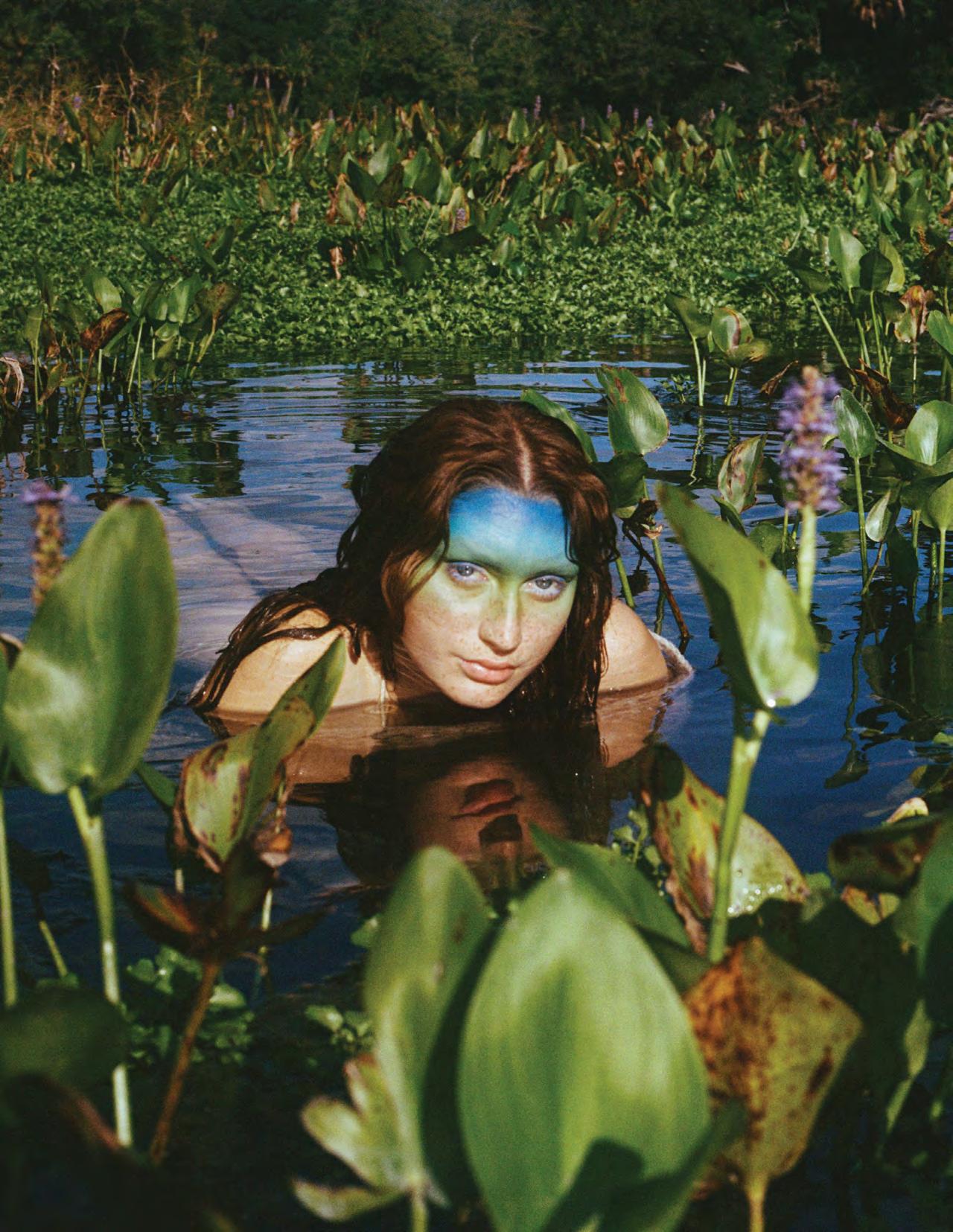The Principles of Being



 Cover photo by Kathryn Hennessy
Photo by Shauna Gentile
Cover photo by Kathryn Hennessy
Photo by Shauna Gentile
Abby Martos
Creative Director
Grace Garlesky
Designers
Michaela Rataiczak
Emely Aurora Rodriguez Perez Lindsey Murray Josi Riggert
Fashion Director Sarah Hansen
Fashion Assistant Genevieve Lococo
PR Director Abigail Simpson
PR Assistants
Caroline Diefendorf Cameron Buttrick
Marketing Director Whitney Van Syckle Marketing Assistant Lilly Dietz
Casting Director Jessica Lubbers
Social Media Director
Gemma Hansen Social Media Assistant Hannah McGonagle
Copy Editor
Madison Sloan
Blog Director
Marissa DeMaio Writers
Macie Hebert
Piper Leistman Ainsley McCullen Breanna Hailes
Maya Kayyal
Stylists
Allyson Woods Jessica Lubbers Lindsey Murray Alexis Maenza Gabriella Fasciani
Beauty Director Keeli Scarlett
Makeup Artist Sarah Hansen
Production Director Shauna Gentile
Production Assistants Maya Grant Jennifer Dang Alexis Jade Maenza
Photo Director Kathryn Hennessy
Photographers
Brooke Rhonemus Caitlin Gurley Daisy Pflaum Shauna Gentile Jana Klinger
Videography Director Marysa Tuttle
Videographers
Brooke Rhonemus Macie Hebert
Inspired by popular science fiction themes and the concept of metaphysics, The Principles of Being explores the five fundamental states of being in an attempt to answer two seemingly abstract questions: “What is there?” and “What is it like?” The state of symmetry exists in the space between the metaverse and reality, formed through the emergence of new technologies and AI, thereby cultivating the emanation of an elite social, physical, and intellectual harmony. The second state, the state of consciousness, is found within our own internal and external existence. It is static and unsettled, seemingly omniscient in its ability to be everything and nothing all at once. Next is the state of tranquility, emerging from transcendent utopias that only seem to exist in dreams. It is the stillness we find in those rare perfect moments, so perfect we hardly believe they ever even existed, yet it always comes back to us in a breath, and then it’s gone again. Then there is the synthesized state, a carefully engineered perception in which to imitate the unattainable ideal. It sacrifices the state of humanity to assimilate a perfect entity without error. Finally, there is the state of sexuality, unpredictable and passionate. It is the impetus of our desires and the expression of our cardinal humanity.
 Photo by Shauna Gentile
Photo by Shauna Gentile

We made it, and when I say we made it I mean we MADE IT! To say that I am thrilled to be presenting Issue 04 to you would be an understatement. Issue 04 has been my most challenging issue to produce to-date. Actually, it’s more like my most challenging project ever. And I’ve never been more proud of anything in my life.
Throughout every obstacle that came our way, this team never gave up and never stopped dreaming with me. I am truly blown away day after day by the talent, drive, and passion that the members of this staff have for this magazine. I can never truly express how grateful I am for each and every member. Together we are an unstoppable force and a leading body of next-generation creatives. Thank you all for trusting me for another issue and for always giving your all.
Issue 04 is about giving up control, control of our futures, our environments, ourselves, or whatever it is. For my whole life, I’ve always needed to be in control. I lived inside this little box that I built for myself and acted like a prisoner when I was in fact the person holding the key. I imposed limitations on myself because I thought I could only do one thing or be one way when really we were made to be limitless. So I smashed that little box and never looked back.
For this issue I wanted to push limits and lose control. Sounds scary, I know, it was. But it was also so rewarding. I navigated the unknown first with apprehension and curiosity, but eventually I took it up with tenacity and perhaps a little bit of thrill. The result was beyond anything I ever could have dreamed of. I’ve found that life is so much more beautiful, so much more exciting, and so much more fulfilling when you lose control and take a leap of faith into the unknown.
As you flip through these pages and take in the thoughtfully created artwork before you, I encourage you to reflect on your own limitations. Let this work be an inspiration for you, a physical representation of the infinite possibilities waiting for you outside of your own control. You are not a prisoner in a little box. You are limitless.
With love, Abby Martos Editor-in-ChiefAs Creative Director for all four editions of Strike Magazine Saint Augustine, I can definitely say this was the most challenging issue yet. Don’t get me wrong- it was so much fun. But Strike Magazine is one giant group project, and everyone knows group projects can be difficult! You have to learn how to delegate without being bossy, how to relinquish control without giving up. You have to make sure the process is collaborative and the result cohesive. On top of that, you have to figure out how to create unique, appealing looks with almost no budget, and convince your team to put in maximum effort without getting paid. And yet- somehow we did it... four times!
It doesn’t get old: the feeling of being on shoot, the excitement of looking through the raw files, and the rush of solving the jigsaw puzzle that is the layout of the magazine itself. I’ve learned so much more from Strike than I could’ve ever imagined. Not only has it sharpened my attention to detail and Photoshop skills, but I’ve learned a lot about working with others. Communicating
with your team, problem-solving in the moment, and learning when to delegate and when to just do it yourselfall of these can only be learned through experience instead of a college class.
I’m incredibly proud of myself and my team, for answering my texts at all times of the day, re-editing photos again and again, and always showing up. I recognize the talent in you guys and I can’t wait to see where you take it. Strike Magazine is truly the coolest, most impactful project I’ve been a part of and I hope you all feel the same way I do about Issue 04.
Grace Garlesky Creative Director
 Photo by Kathryn Hennessy
Photo by Kathryn Hennessy
 Photo by Shauna Gentile
Photo by Shauna Gentile
Inspired by defining cyberpunk films of the 20th century such as The Matrix and Ghost in the Shell, Equilibrium explores the state of symmetry. With the emergence of new technologies and AI comes the emanation of an elite social, physical, and intellectual harmony.
 Makeup
Keeli Scarlett
Production
Jennifer Dang Maya Grant
Fashion Genevieve Lococo Jessica Lubbers
Talent Lorenzo Lawrence Mallory Bushnell
Steven Cody Jr.
Layout Grace Garlesky
Makeup
Keeli Scarlett
Production
Jennifer Dang Maya Grant
Fashion Genevieve Lococo Jessica Lubbers
Talent Lorenzo Lawrence Mallory Bushnell
Steven Cody Jr.
Layout Grace Garlesky
 Photo by Kathryn Hennessy
Photo by Kathryn Hennessy

 Photo by Kathryn Hennessy
Photo by Kathryn Hennessy
 Photo by Daisy Pflaum
Photo by Daisy Pflaum
 By Madi Sloan
By Madi Sloan
Do you remember growing up and wishing you could have Cher’s iconic closet from Clueless? Did you ever think to yourself how much easier it would be if a computer could match your outfits together? This childhood dream could now be a reality. With new fashion technology, we could all get the chance to live out our Clueless closet fantasy. According to a Forbes article, revenues in the global apparel market are expected to reach $2.25 trillion by 2025. Despite fashion being one of the biggest, global industries, it is not the first industry people associate with technology. However, more and more designers and brands are beginning to embrace the latest technology in order to push the boundaries of fashion.
Like with every industry, fashion is not without its downfalls. The clothes you order online rarely fit properly, picking out your outfit for the day can be the most anxietyinducing task you encounter, and do not even get me started on the environmental effects from apparel manufacturing. But what if technology could fix all of these fashion disasters? For the newly launched brand FINESSE, artificial intelligence might be the solution.
In order to fight against overproduction, FINESSE puts AI at the heart of their creative process. By using new technology, the
brand analyzes current fashion trends on the internet before even producing clothes that may or may not end up in a landfill. From there, FINESSE proposes three different outfits modeled in 3D that are submitted to their customers to vote on. Whichever one gets the most votes is the only outfit manufactured, cutting out unnecessary fabric waste.
“We only produce what you want. Vote now and items are ready for shipment within two weeks,” promises the brand on its official website. “We use AI to predict how much to produce, no waste, no overages, and no pollution.”
In an article discussing the connection between clothing and pollution, Bloomberg states, “The U.S. alone throws away up to 11.3 million tons of textile waste each yeararound 2,000 pieces of clothing each second.”
Now think about the amount of fashion waste that is produced globally. Unfortunately, the number is greater than we would like to imagine. However, with more brands using artificial intelligence to cut back on overproduction, technology can help make fashion a more sustainable industry.
Have you ever wished you could rock a head-to-toe Prada outfit or wear an iconic look made specifically for a celebrity? With the metaverse, these runway pieces can now
be brought straight to your digital wardrobe. As more and more of our time is spent online, fashion brands are looking to the metaverse in order to reach a wider audience.

DRESSX is currently the world’s largest digital fashion retailer and has partnered with several social media businesses and gaming platforms, including Meta (formerly known as Facebook) and Roblox, to produce clothing for your online persona.
This past July DRESSX also partnered with U.S luxury brand Jason Wu to produce a digital wearable NFT of the gown worn by the former first lady, Michelle Obama, at the 2009 Inaugural Ball. The physical dress is on display at the First Ladies exhibit at The National Museum of American History behind clothes doors for no one to wear again. However, digital fashion now gives you the chance to wear clothes you couldn’t get before.
Not only can digital fashion address issues of overproduction and overconsumption, but it could also pave the way for more inclusivity in the industry. A study done by the Institute of Digital Fashion highlighted the exclusionary nature of digital fashion by discussing how the virtual world can be more diverse and inclusive. In the metaverse, clothing is highly personalized and unique, giving people a digital space for them to represent themselves more openly and freely.
The world of fashion is constantly evolving, forcing designers and brands to find unique ways to keep up with the fast paced industry. With artificial intelligence and digital clothing, technology and fashion are able to meet in perfect harmony. In order for the fashion industry to reach equilibrium, brands have to look to the future. And if there is one thing I am certain about, the future of fashion is technology.
 Photo by Kathryn Hennessy
Photo by Kathryn Hennessy
2022 has been a big year for celebrities, as well as their fashion choices. We’ve seen comebacks from a variety of different stars from our childhoods, as well as a few faces who have made it big in record-breaking time. Here are five celebrities of the moment and their iconic looks of 2022.
Anne Hathaway has become the “It Girl” of 2022 and we’re living for it. Her fashion rebrand perfectly captures her playful and confident attitude. The Princess Diaries star wears lots of neon colors, such as hot pink and sunshine yellow, and also rocks the wide-legged pant look. One ‘fit of hers that had jaws dropping left and right was her Cannes Film Festival ensemble. She wore a Gucci 60s-inspired navy mini dress, silver platform heels, and cat-eye sunnies. She paired the outfit with a bump-it hairdo, completing the retro look. She brings lots of light and love to everything she does, and what she wears is no different.
Florence Pugh, known for her iconic frown and incredible acting skills, has graced fans with many incredible outfits this year. Her style has definitely evolved over the years, and 2022 was not excluded. She constantly serves with fun, fearless, and bold outfits, often bringing in both princess and punk elements. Her looks for the Venice Film Festival this
year were no different. Despite the drama surrounding the premiere of her new movie Don’t Worry Darling, Pugh arrived unbothered in a purple matching set decorated with Valentino logos and monograms, accessorizing with a pair of sunglasses and a classy Aperol Spritz in hand. The look was very laid back and breezy and yet, still completely breathtaking, complimenting her skin tone. As if she wasn’t already dressed to rock the runway, she changed into a custom made Valentino black sequinembroidered tulle dress for the red carpet. The dress captures the romantic yet playful feel of the event, which is definitely on brand for Pugh, and her hair and makeup was very Old Hollywood yet modern, inspired by her character in the film.
Brought to fame by her role in Uncut Gems and her whirlwind relationship with Kanye West, Julia Fox has now become a celebrity in her own right due to her hilarious TikToks and quirky sense of style. She can take any object, style it into an outfit, and look amazing while doing so. Her outfits always win, often featuring daring and sexy elements that compliment her look beautifully. She often wears darker colors and uses materials such as latex, leather, denim, and even unconventional materials like human hair!


During New York Fashion Week, Fox arrived at the Harper’s Bazaar Icons party wearing an edgy plastic dress designed by Joanna Prazmo. She accessorized with a plastic purse, plastic heels, and her signature combination of bleached eyebrows and a dark smokey eye.
Starring as Rhaenyra Targaryen in House of the Dragon, Emma D’arcy has become our latest style icon. They feature theatrical and performative elements in their outfits, as well as both masculine and feminine designs and bold eye makeup. Their style is very regal yet also unique and bold. Their stylist, Rose Forde, explained that “we tend to lean towards having either high drama or finding a character to explore in a look”. To the Los Angeles premiere, D’arcy wore an oversized black suit by Vetemens, white sneakers
and a red lip. They also turned heads at the London premiere, wearing a loose white shirt under a gold vest featuring a plunging neckline, along with skinny, long black vinyl pants, all designed by Acne Studios. They completed the look with blue beaded gloves and Roker platforms.
Lizzo always stuns in both her performance and her looks. She is constantly dazzling both the streets and the red carpets with many incredible outfits. Her style is unapologetic, unforgettable, fun and bold. Her message of self-love and positivity is evident in both her confident attitude and her incredible clothes. During her second SNL appearance, she wore a hot pink matching ensemble consisting of a corset, mini skirt, puff-sleeve cape and metallic heels. She also made the best-dressed list at the 2022 BET Awards with a custom Gucci navy blue floor-length gown. The dramatic gown featured sequins, a thigh-high slit, and was trimmed with feathers.
Not only is Jennie Kim part of one of the most popular K-pop groups in the world, she’s also known for her fashion sense. The Blackpink star and Chanel Ambassador is the queen of making comfy outfits look chic. She is able to take simple pieces and elevate them to new standards while also looking smoothly and gracefully put together. Staples in her wardrobe include cute cardigans, baggy jeans, and, of course, anything Chanel. When asked if she would ever create her own fashion line, Kim told Vogue Korea that “I haven’t thought of it yet, but I would want to portray a comfortable and natural side of myself if I were to start my own fashion brand. A brand that people can wear easily and comfortably rather than an extravagant one.” On the cover of Elle Korea’s November 2022 30th Anniversary edition, Kim was featured wearing, naturally, two Chanel outfits. The first was a strapless, flowing white dress paired with a wide-brimmed veiled hat and black ribbon. The second was a black lace mini dress with long sleeves and strappy black heels. Both outfits capture Kim’s effortless yet unforgettable style, as well as her gentle demeanor and strong sense of self.
ORIGINS portrays the state of consciousness. This is an awareness of internal and external existence. While the definition of consciousness is rather vague, it can most easily be understood as the center of all thoughts and feelings, imaginations, experiences, and perceptions.
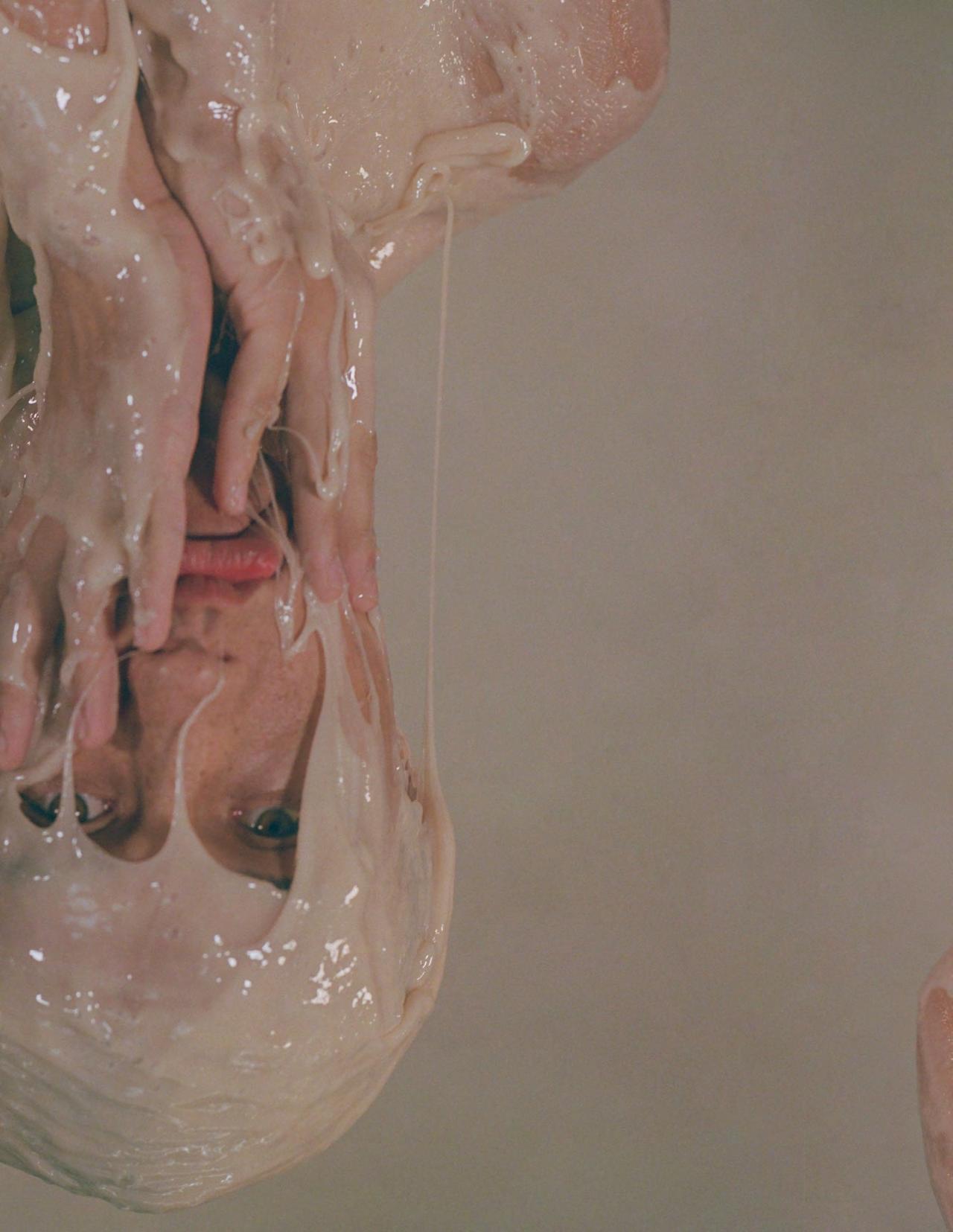
 Photo by Kathryn Hennessy
Photo by Kathryn Hennessy
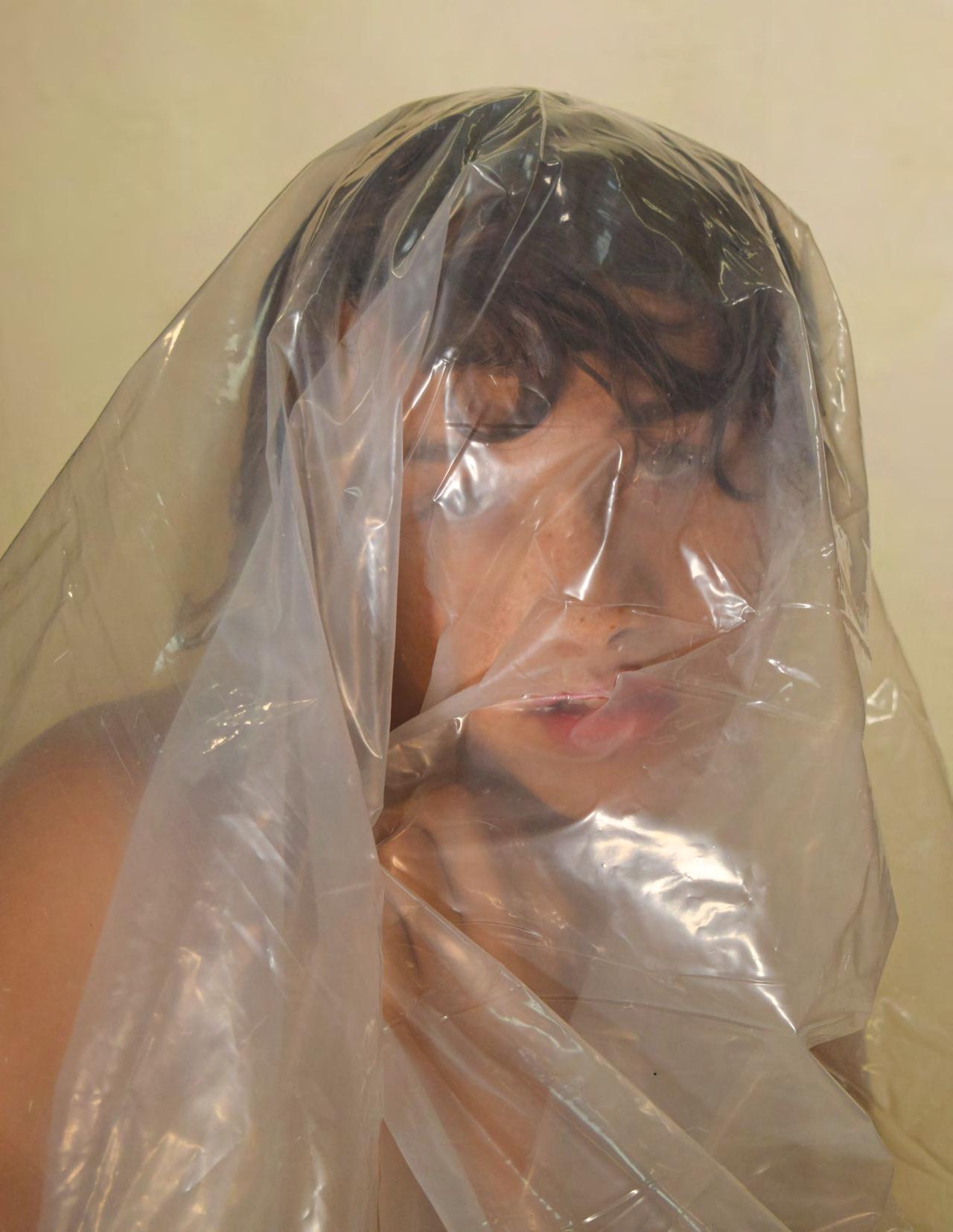 Photo by Brooke Rhonemus
Photo by Brooke Rhonemus
Although fashion and identity are intricately connected, conformity used to be the norm in order to fit in. People would hide their flaws, only putting the best foot, filters, and faces forward. This striving for approval often led to self-destruction, a loss of self worth, and a loss of identity. However, our world is slowly shifting back to our roots. Acceptance and representation of people’s origins is shown in many ways, but fashion is often a predominant form of expression. Through clothing, people are able to tell their stories, represent their culture, and embody their origins.
Throughout the mid-2010s, pride movements started to become more mainstream, and a major shift in people’s identity both online and face to face began. Individual identities, interests, and personalities returned to the limelight. People with different backgrounds shared their stories, those with similar interests and beliefs connected, and people began to ground themselves where their roots are, not pretending to be firmly planted as something different. They went on an inner journey accepting themselves and coming out to others as the real them, no matter what that might look like. The rise of the “be yourself” movement eventually took over, and authenticity reigned over everything. Instead of “masking” for different friend groups or trying to fit into the norm, revealing true beliefs, interests, and identity are now the focus.
This concept of getting rid of the idea of an ideal image and focusing on each person’s individuality is what brought about identity pride. Identity pride is the various statements of a person’s beliefs, feelings, interests, and so on. Identity pride is an outspokenness of someone’s consciousness and self. Identity pride is celebrating our origins. Well known
By Breanna Hailesembodiments of identity pride are pride month and the LGBT+ community, the POC community, and even those with different disabilities. These groups took the idea of “be yourself” head on and created an entire culture out of it, advocating for realistic perceptions, communication, and most importantly acceptance. One medium that allows these groups to express their identity pride is fashion.
When looking at the fashion industry in 2020, the representation of the POC community was at an all time high. In September following the BLM movements, most fashion magazines had a Black cover model, more POC models walked the runway, and Black owned brands saw an increase in sales. The fashion world took a turn to reflect identity pride and the revolution that came along with it, with more representation and advocacy coming from the fabrics, designs, and people who wear it. More importantly, diverse representation of different people came too, such as Ellie Goldstein being the first model with Downs Syndrome to appear on Vogue Italia and represent Gucci. The campaign was a massive hit, with Ellie being the most liked post on Gucci’s page to date. American Eagle’s Aerie is well known for having a range of models of all shapes, sizes, ethnicities, even including a model with Type 1 Diabetes. These staples to the evolution of the fashion industry, and identity pride have been extremely well received, and proves that people want to see people as themselves, not as something fake or Barbie doll-like.
Our cultural identity can also be seen in what we wear. When you think of Dr. Martens, flannels, and beanies, what is the

 Photo by Shauna Gentile
Photo by Shauna Gentile
first thing that comes to mind? You might associate that style with being “indie” and if someone was wearing that outfit on the street, you would most likely call them a “hipster.”
What about leather jackets and metal studs? “Punk” would immediately pop in your head. This is because when we visualize subcultures we often associate their identity with a certain style. However, as more of our time is spent online, we are exposed to a wide array of diverse aesthetics, creating a society that is more carefree and accepting of different styles. More women are gravitating towards menswear, and men are reaching for the nail polish and pearls. Although subcultures still
lean to specific fashion trends, we are starting to break societal and gender boundaries and tapping into who we really are at our core.
Our origins are a part of our identity, and our identity is a part of our everyday lives, including how we dress. People may not be explicit with who they are or their origins, but we still find subtle ways to show it, and our clothes tend to tell our stories. As Gerrianna Gamez puts it, “Our identities are immensely complex and are always developing as we go through life. Fashion has proven to be the medium that can successfully portray the layers of complexity that come with individual identity.”

 Photo by Brooke Rhonemus
Photo by Brooke Rhonemus
 Photo by Brooke Rhonemus
Photo by Brooke Rhonemus
 Photo by Brooke Rhonemus
Photo by Brooke Rhonemus
Viewers were not always able to watch runway shows via their couch. This was until Alexander McQueen’s collection, Plato’s Atlantis, became the first show live streamed. Motion controlled robots were also used to track and film the models, providing a 360-degree view.
July: DRESSX partners with U.S luxury brand Jason Wu to produce a digital wearable NFT of the gown worn by the former first lady, Michelle Obama, at the 2009 Inaugural Ball
September: Bella Hadid made fashion history when artists spray painted a wearable dress onto her body at Coperni’s show during Paris Fashion Week. Coperni called the moment “when fashion meets technology” in an Instagram post.
3D printing takes over the fashion industry! Iris van Herpen unveiled her first 3D printed designs this year in collaboration with an architect and printing company. Each piece in the collection took around seven days of 24/7 printing to make.




Sustainability technology keeps getting more advanced! This year Stella McCartney unveiled the first-ever garments made with Mylo, a vegan, sustainable, animal-free leather alternative, developed by Bolt Threads.
The year of NFTs: In September, Karl Lagerfield’s NFTs sold out in 33.7 seconds, becoming the blueprint for those to follow in the brand’s footsteps.
CGI-generated fashion model and influencer, Miquela Sousa, first debuted on social media and has now partnered with brands, such as Prada, Diesel, and Calvin Klein. The fashion avatar has paved the way for more brands to use 3D models, reducing the amount of textile waste.
What if you didn’t have to go to the store to try things on? This year Gucci customers were able to digitally try on their Ace sneakers on the AR (augmented reality) app.
The world’s first digital-only fashion collection, including 19 pieces, was launched by Scandinavian designer, Carlings.



 Photo by Kathryn Hennessy
Photo by Kathryn Hennessy
Inspired by the epic sci-fi film Avatar, this tropical planet is a secret paradise located in a far off solar system inhabited by woman-kind. A world without war, conflict, or domination, CALYPSO represents the state of tranquility, encapsulating a perfect utopia.
 Photo by Kathryn Hennessy
Makeup Keeli Scarlett
Fashion Genevieve Lococo
Jessica Lubbers
Production Jennifer Dang Maya Grant
Talent Molly Gardiner
Photo by Kathryn Hennessy
Makeup Keeli Scarlett
Fashion Genevieve Lococo
Jessica Lubbers
Production Jennifer Dang Maya Grant
Talent Molly Gardiner
 Photo by Shauna Gentile
Photo by Shauna Gentile

What if you could live in a world without grief or struggles? Coined by English Philosopher Sir Thomas More in his novel, Utopia , the word itself means “nowhere”, coming from the Greek words ou, or not, and topos, or place. Utopianism is the concept of a perfect world, one with idealized versions of politics, customs, laws, and living conditions. On the surface, Utopia sounds like a world we should strive for- no war, no suffering, no wrongdoing, only happiness. Who wouldn’t want to live in a world like this? However, if we go a little deeper, this facade quickly fades to Dystopia. Due to the nature of modern humans, Utopia is unattainable. Take the renowned film The Truman Show for example.
The Truman Show features the main character, Truman, living a seemingly perfect life in the model city of Seahaven. He has a secure job as an insurance adjuster, a beautiful wife, and a comfortable house in the suburbs. For Truman, everything seems to be going perfectly. Spoiler alert- it’s not. In reality, Seahaven is a TV set inside of a nearly impenetrable dome with no communication to the outside and Truman’s life is being broadcasted for millions of people in the real world to see. Truman slowly becomes aware that his peaceful life in suburbia is not what it seems, but is further gaslit into believing the lies the more he tries to escape them. Eventually,
Truman is faced with a difficult decision- continue living a perfect but false reality, or escape and experience a life full of struggle, but one that is real.
The character directing Truman’s life for the world to see states, “There’s no more truth out there than there in the world I created for you. The same lies, the same deceit; but in my world, you have nothing to fear.” Though exaggerated in the film, reliance on technology and social media is a real problem in society today. Generally, we mostly see the benefits of technology. We use social media to make connections and have a constant plethora of knowledge at our fingertips. Along with these benefits, however, technology and social media bring a few major consequences to the table. Both have the potential to serve as an escape for a lot of people. While screen times are on the up, presence in reality is decreasing. In The Truman Show, clips of the show’s viewers are shown, and through them, we catch glimpses of the less perfect, real world that these viewers are trying to escape from through Truman.
Today, a major area of media consumption is watching reality TV and vlogs. As a society, we fear facing the bitter truths of reality, so we bury ourselves in the glamorous lives of others, which we consider to be Utopia. After the release of Youtube in 2005, vlogs became one of the most sought after video genres to watch and continued to grow in popularity with the progression of technology. Many Youtubers got their start by filming their daily lives and routine. Take Emma Chamberlin for example. Although
Photo by Shauna Gentileshe is now a fashion icon, Emma started her career by making videos and posting them online in 2016. Viewers quickly connected to her authentic style of vlogging and continue to subscribe to her channel even today, six years later. It is hard to not watch her traveling vlogs and think to yourself, “if only I was in Denmark right now.” Even just scrolling through someone’s Instagram feed can raise subconscious questions like “Why can’t my life be this perfect?” or “Why can’t I be that happy?” These questions only make us want to scroll more, as we believe we can answer them by doing so.
While Truman runs away from the cameras, our society continues to run toward them. So much of our time is spent online, carefully crafting our social media profiles to look as though we lead perfect lives, when the reality is much different. We want the picturesque life that Truman leads and would do almost anything to achieve it. However, Utopianism itself is a dangerous ideal. A world as perfect as Seahaven will always be unattainable to human kind. It is human nature to cause violence, war and destruction. When imperfect humans attempt perfectibility, they often fail. Truman himself was brought up for the entertainment of the real world, and only he suffers for it. The movie offers us a glimpse at a life where almost every person on Earth is watching TV for twenty-four hours a day, seven days a week. It is entirely feasible that The Truman Show predicted our future. This may seem unattainable and even impossible to us now, but considering the major technological advances made even in the past year, who can say what our reality will look like in the next one?
The issues present in The Truman Show are not just fiction- they’re reality. We, however, do not have the luxury of deciding whether to escape technology or not. Despite this, not all hope is lost. We have the power to make our own domes, giving us the ability to assess our participation in society and contribute to making it a better place. We must attempt to enjoy the benefits of technology and social media without becoming slaves to them in the future. Like Truman, we are faced with a similar, though slightly different decision- continue on this path towards the domination of technology or step into reality and experience both the difficulties and pleasures of living true lives. What will you choose?

 Photo by Kathryn Hennessy
Photo by Kathryn Hennessy
 Photo by Shauna Gentile
Photo by Shauna Gentile
 Photo by Shauna Gentile
Photo by Shauna Gentile
Whatever happened to that $1,330 Louis Vuitton carrot pouch? Oh right, it sold out in seconds. Why? Because BTS’ lead member, RM, posted a selfie and caught a glimpse of the bag in the background. Coincidence? I don’t think so. What about when the London-based brand, Self Portrait, sold through five production runs of its red melange knit cardigan after it was seen worn by Jennie of Blackpink in a Netflix documentary about the group? Fashion designers and critics across the globe are attributing large parts of their brands’ success to what is known as “the K-Pop effect.”
Brands are more frequently finding that K-Pop “idols,” as they’re called, are powerful driving forces for trendsetting and sales in the fashion and beauty industries. Anything these idols wear, whether it’s different hairstyles, make-up looks, or outfits worn in music videos, live performances, or even the airport, turns to gold, instantly becoming a powerhouse trend. Gildas Loaëc, cofounder of Franco-
Japanese label Maison Kitsuné, attested to this in a feature with WWD, citing a time that Blackpink’s Jennie created a “snowball effect” for the brand after being spotted in Kitsuné’s clothing at the airport. The brand experienced massive increases in sales, seeing their clothes on more K-Pop talents and even appearing in various K-Dramas (Korean TV dramas).
It’s no surprise that major fashion houses want to get their clothes on these idols as fast as possible. Luxury house Dior, for example, generated an estimated $1.74 million in media impact value (MIV) after just one Instagram post of megastar Jisoo of Blackpink at their March 2022 fashion show, according to WWD. As a result, even more brands are picking up K-Pop idols as global ambassadors such as BTS for Louis Vuitton, girl-group Aespa for Givenchy, soloist Hyunah for Loewe, and Exo’s Kai for Gucci, to name a few.
So why exactly is K-Pop so influential in fashion? Much of it has to do with the incredibly loyal tens of millions of global fans, mostly of younger generations, generated by K-Pop’s superstars. These fans are obsessed with watching their favorite idols’ every move, creating viral posts on social media platforms that source the origins of every outfit ever worn by their bias (favorite member), which has the effect of increasing the corresponding fashion brands’ potential customers on a global scale. Casey Cadwallader, creative director at Mugler, recently stated in a feature with WWD that he’s “never known a group of people so powerful — their fans are so loyal and energetic, I’ve never experienced anything like it — it can feel like they’re more famous than Michael Jackson.”
The thing is, K-Pop fashion is highly strategized and leverages fashion in a way that elevates its members to a super-human status. They’re called idols for a reason. K-Pop has forever been criticized for imposing unrealistic standards on its members and, subsequently, their fanbases. But do these super-human standards actually contribute to their success? An article published by The Spectator would argue that it does. K-Pop idols undergo intense training and processes in order to maximize their public appeal, perfecting complicated choreographies and vocals, appealing to dominant beauty standards and ideals, and ensuring flawlessness in every endeavor. While the ethics of this practice are questionable–to put it nicely–it really comes as no surprise that people all over the world “idolize” these performers.


So, if you’re someone who likes to stay ahead of the fashion game, it might be in your favor to take a look at what’s happening in K-Pop. After all, most K-Pop trends tend to be years ahead of what’s happening in the U.S. Don’t believe me? Take a look at popular girl-group ITZY, who sported this summer’s hottest trends of cowboy boots, peasant blouses, and vibrant hot pinks in their “Not Shy” music video–IN 2020! Let’s be real, K-Pop isn’t taking over fashion, K-Pop IS fashion.

 Alexis Maenza Lindsey Murray Ally Woods
Fashion
Sarah Hansen Makeup
Sydney Veihdeffer Talent
Emely Perez Grace Garlesky
Layout
Photo by Shauna Gentile
Alexis Maenza Lindsey Murray Ally Woods
Fashion
Sarah Hansen Makeup
Sydney Veihdeffer Talent
Emely Perez Grace Garlesky
Layout
Photo by Shauna Gentile
In an increasingly synthetic world littered with filters and false realities, SYNTHESIZATION tells the story of the modern Frankenstein. The synthesized state is one of a carefully engineered perception, one to imitate the unattainable ideal. It sacrifices the state of humanity to assimilate a perfect entity without error.
 Photo by Shauna Gentile
Photo by Shauna Gentile
 Photo by Shauna Gentile
Photo by Shauna Gentile
 Photo by Shauna Gentile
by Jana Klinger
Photo by Shauna Gentile
by Jana Klinger

It wasn’t until 1816, when the idea of Frankenstein came to Mary Shelly. On a dark summer night by an English lake shore, Shelly, her husband and their friends were exchanging ghost stories by a chimney fire as a friendly competition. One of her friends, Lord Byron, drafted a fragment of a Vampire story, while Shelly created the story that started the Sci-Fi thriller genre.
Despite its publication date, Shelly’s words run true. Why do we feel the need to create something unattainable? Or constantly work against nature’s natural course on our bodies?


During the height of the pandemic, Very Well Health, posted a timeline article of plastic surgery. They began dating this kind of healthcare all the way back to 800 B.C., calling it, The History of Plastic Surgery. In the article, the author, Natile Kita, places the origin to skin grafting by ancient Indian cultures. Although, they say it wasn’t long until the West started adapting this procedure to their new phenomenon. Kita writes, “Overall progress in plastic surgery, like
most of medicine, was slow over the next few thousand years, as techniques used in India were introduced to the West and then subsequently refined and adapted for new applications.”
Fast forwarding to 2022, we have cosmetic clinics advertising surgeries done in less than an hour and with no anesthesia present. What do psychologists say about our ProPlastic Western lifestyle?
In a journal titled Journal of Psychosomatic Obstetrics and Gynaecology, the authors discuss the possible psychological changes that plastic surgery has on a person. They studied life events as well as self-esteem from self reported surveys done by participants prior to receiving their reconstructive hand surgeries and after. The psychologists discovered higher confidence and more positive adjectives from the same reports three months post procedures.
But what about being Botched? The hit TV show highlights plastic surgery mishaps and major disasters to viewers across the nation. There are even medical doctors such as Dr. Miami, who have their patients sign waivers before their Brazilian Butt Lifts, tummy tucks, and even breast augmentations so he can post the results on social media sites.
What does this desensitization of major surgeries do to our youth? Isn’t puberty hard enough? Let alone if your classmates have the opportunity to get a new nose with Mommy and Daddy’s money and permission.
Back in the 1960s, Physicians from John Hopkins Hospital wrote about their findings of women seeking a Rhinoplasty (nose surgery). During their study, the physicians interviewed 30 female patients from the ages 14 to 43 who presented themselves for cosmetic rhinoplasty before and after the surgery. The authors found that when the women reported getting the “nose jobs” in adolescence, they grew to resent the procedure later in their womanhood.
World-renowned supermodel, Bella Hadid, reported the same resentment in an interview this past year. As a
Photo by Jana Klinger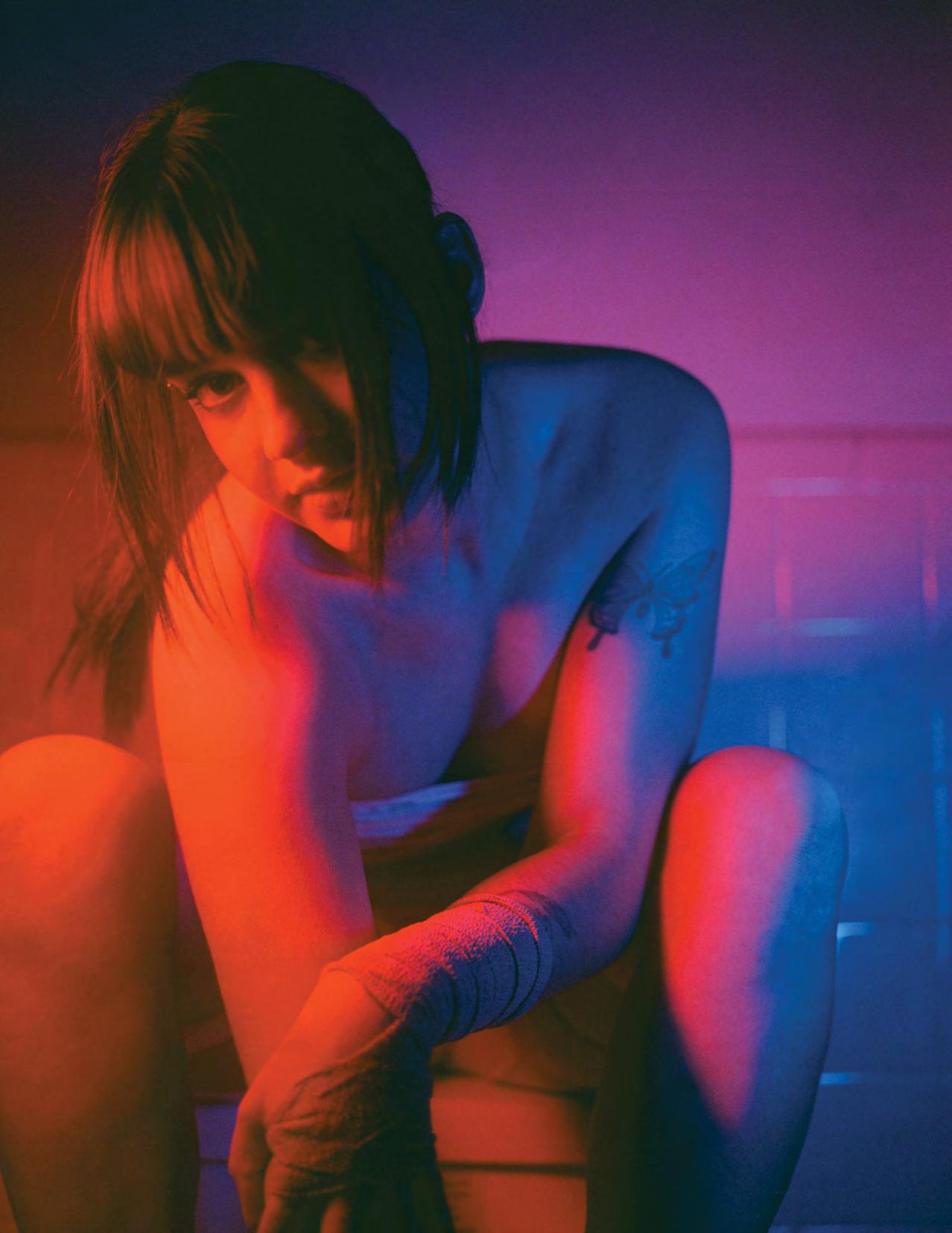 Photos by Shauna Gentile
Photos by Shauna Gentile
25-year-old woman, she speaks back on her childhood anxieties and pressures of being the “ugly sister” beside fellow model Gigi Hadid. Their mother allowed the procedure to be done when the fashion icon was only 14 years old. In an article with Insider, Bella says, “I was the uglier sister. I was the brunette … and when you get told things so many times, you do just believe it.”

For some people, going under the knife is a successful and uplifting experience as they receive an increase in compliments and promotions in the workplace, as well as in everyday life. But, who are you kinder to? A person with a smooth forehead or someone that is more apt to showing their physical age? Where does the blame of the unrealistic and frankly, unnatural body standard lie? Well, it’s hard to say. While Tom Cruise is still catching 20 year olds in blockbuster films, housewives are afraid their husbands will leave them for someone more youthful. I guess we can leave the blame on the patriarchy and consumerism for rewarding able bodied individuals over those with crows feet. These standards will stay set as long as we let them.
It is up to newer generations to change the stigma we have placed on wrinkles and those with unwanted “love handles”. Although, a little botox never hurt anyone right?
Photo by Shauna GentileThis past year, many new and repurposed fashion trends have taken the streets and filled the runways. We’ve seen the return of Y2K and the resurgence of fashion staples. Here are some of the highlights.

Following the recent rise in popularity of Y2K fashion, platform shoes have made a comeback this year. They’ve spread from Versace’s Medusa Platform Pumps all the way down to Target Brand shoes. Platform shoes have also regained popularity with the iconic silhouette taking over the market.


With the release of Bridgerton Season two earlier this year and different period pieces such as Mr. Malcolm’s List, Emily, and Persuasion, regency-core clothing has gained popularity. This has popularized the iconic corset tops you see in stores today.
The outfit formula that took over TikTok has become an essential to everyday clothes. The outfit is composed of a tight crop top and baggy jeans. It is a staple of modern fashion that you can find any time, anywhere.


The New England old money closet staple has been in stores for months now. It’s the perfect layering piece for your fall and winter outfits, bringing academia into your wardrobe.
Chunky jewelry has taken hold this year. Whether it’s stacked rings, layered necklaces, or big earrings, you can find them anywhere. They’ve become a staple accessory to the everyday outfit, making them even more fun and exciting.
The 90’s lowrise skirt has returned to the forefront of fashion. The floral prints go beautifully with the muted tones of the everyday basic tops?. It’s a great way to spice up an outfit, making what could’ve been drab a little more interesting.
The classic preppy look has evolved this year with the rise of punk prep. We’ve seen this in pleated skirts with chains, and over sized mismatched sweater vests, giving the look a new life.
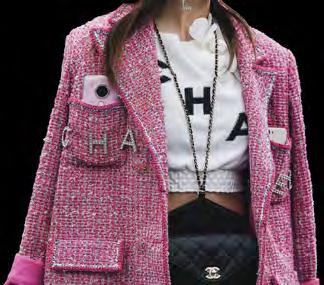
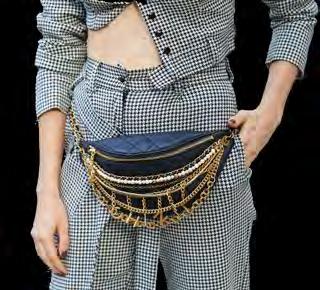
The iconic color hot pink has taken a recent rise in fashion, all thanks to the PPPink Valentino collection released on March 6th. The color has been prominent in fashion for decades, but this past year, it has taken on a new life. We’ve seen it at fashion weeks, the MET Gala, red carpets, as well as in stores and everywhere online.

VENUS examines the state of sexuality. The planet is named after the Roman goddess of love, sex, and desire, sometimes referred to as Earth’s evil twin. In Roman mythology, the goddess Venus is said to tame the essence of her fiery male counterparts, Mars and Vulcan, balancing the male and female constituents.
 Fashion
Gabriella Fasciani
Genevieve Lococo Lindsey Murray Makeup Keeli Scarlett
Production Lindsey Murray Jennifer Dang Maya Grant Alexis Maenza
Photo by Caitlin Gurley
Talent Lauren Graham
Layout Michaela Rataiczak
Fashion
Gabriella Fasciani
Genevieve Lococo Lindsey Murray Makeup Keeli Scarlett
Production Lindsey Murray Jennifer Dang Maya Grant Alexis Maenza
Photo by Caitlin Gurley
Talent Lauren Graham
Layout Michaela Rataiczak
 Photo by Jana Klinger
Photo by Jana Klinger
The expression of sexuality is an incredibly important part of life, as sexuality makes up a large portion of our identity. However, the freedom of this expression has been held back for centuries thanks to purity culture, which, for some reason, continues to have a huge impact on our society today. Purity culture is the idea that sexual abstinence until marriage, modesty, and strict gender roles are the keys to living the best life as possible. This mindset has manifested heavy restrictions, specifically on women, which has left long-lasting effects on the world as we know it.
The most noticeable effect it has caused is the double standard between sexually active men and sexually active women. When men have a long history of sexual partners, they labeled as womanizers, casanovas, players, and lady-killers. They earn bragging rights, gain street cred, and are regarded as “cooler.” Men can go to strip clubs and own Playboy magazines. It’s considered normal for men to indulge in these activities, but god forbid a woman does the same.

If women have long history of sexual partners, they’re slut-shamed and thought to be worth less. They are considered easy to get with and called sluts, among countless other names. Women can’t talk about sex because it’s “dirty” and “should be kept private.”
If women brag about their sex lives, they are looked down upon. It’s not considered normal for women to indulge in sexual activities and express their sexuality. Yet when they choose to not indulge in these activities, they’re boring, a goody-two-shoes, stuck up, and “shouldn’t take everything so seriously.”
This is a completely absurd concept.
Photo by Jana Klinger Photo by Caitlin Gurley
Photo by Caitlin Gurley
The influence of purity culture bleeds into the ideas of modesty. If women wear more revealing clothing “they’re asking for it,” but when they choose to dress modestly “they’re a prude.” This leaves women no choice but to be relentlessly ridiculed for ridiculous reasons no matter how they dress. It has also insanely influenced gender roles, helping to push cisgendered, heterosexual men into positions of power, and pushing down everyone else. This creates immense amounts of guilt targeted at women, making it feel like the expression of sexuality is something to be ashamed of, and if you do express your sexuality, you’re considered as less than, or worth less than you were before. You’re thought of as “used goods”, no longer the shiny and new version everyone tells you that you need to be, because “that’s what people like.”
In the past few decades, more and more people are beginning to challenge purity culture. Women have been combatting this shame by wearing their sexuality on their sleeves, shedding the long held idea that they aren’t allowed to enjoy it. Though it is still looked down on and considered sinful by many, they wear their sexuality with pride.
Though it’s easier said than done, don’t let yourself be controlled by a societal rule as silly as this. Wear that dress, that top or that skirt. You are not responsible for the world’s idea of you and what it wants you to be. The expression of your sexuality and yourself is important. In the words of Kasey Musgraves, “You’re damned if you do and you’re damned if you don’t. So, you might as well just do whatever you want.”

 Photo by Jana Klinger
Photo by Jana Klinger
 Photo by Jana Klinger
Photo by Jana Klinger
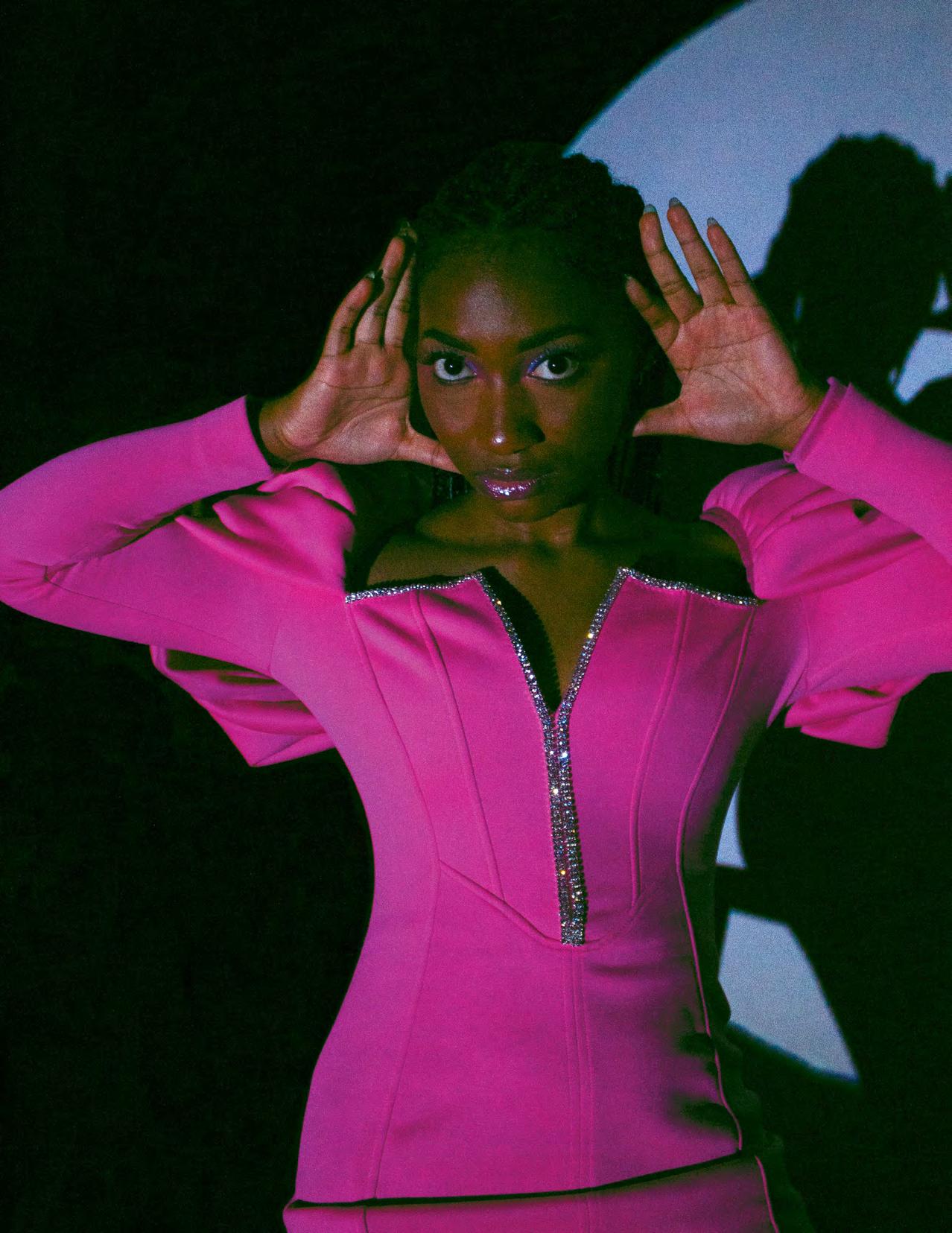 Photo by Jana Klinger
Photo by Jana Klinger
 Photo by Daisy Pflaum
Photo by Daisy Pflaum
 Photo by Kathryn Hennessy
Back Cover Photo by Shauna Gentile
Photo by Kathryn Hennessy
Back Cover Photo by Shauna Gentile


